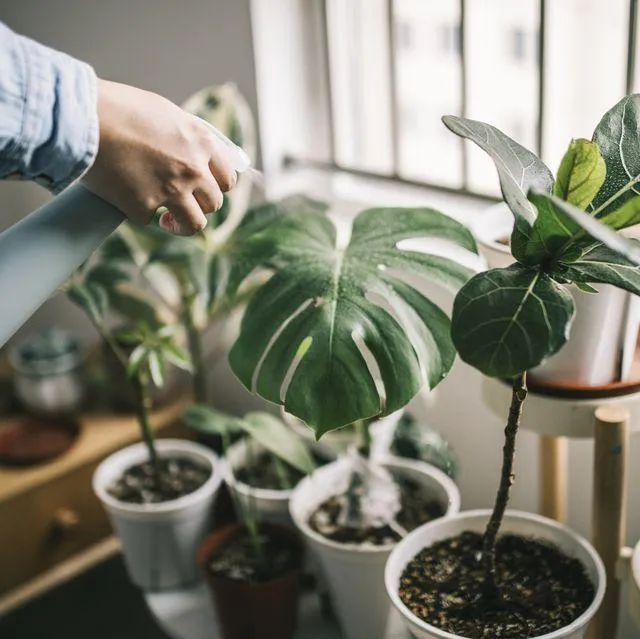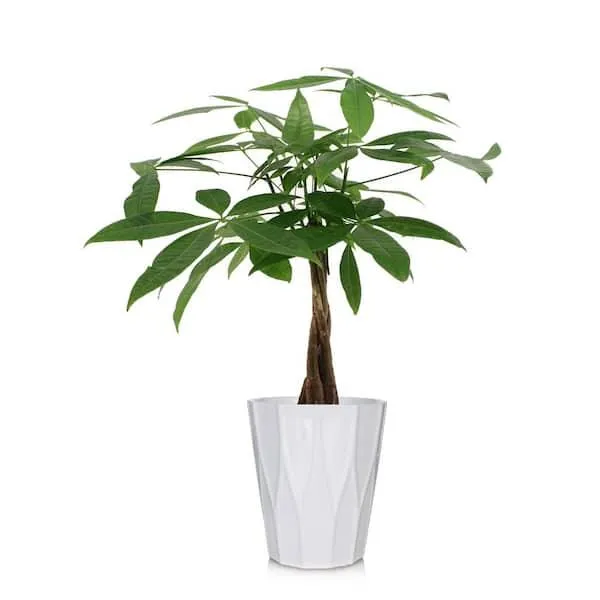Everything You Need to Know About Growing Indoor Trees
Whether you want to bring a touch of nature into your home or are looking for an interesting indoor gardening project, growing a tree indoors can be a rewarding experience. However, not all trees are suitable for the indoors. In this article, I will discuss the best types of indoor trees to grow, proper care requirements, and handy tips to ensure your tree thrives inside. By the end, you’ll have all the information needed to select and care for an indoor tree like a pro.
Suitable Indoor Tree Types
From my experience as an avid indoor gardener, these tree varieties tend to do the best inside homes and offices:
- Dwarf Citrus Trees:
Lemons, limes, oranges – dwarf varieties of citrus trees have a more compact growth habit that works well indoors. Just be sure to provide adequate sunshine. - Dwarf Umbrella Tree:
Also called schefflera, this versatile houseplant has leathery green leaves and can grow in low-light conditions. It’s very hardy. - Parlor Palm:
With its fountain-like fronds, the parlor palm has a more traditional “tree” shape. It thrives in medium to low light. - Jade Plant:
This succulent almost looks like a miniature tree. Its gnarled trunk and branches are very distinctive.
In general, look for dwarf or miniature varieties that won’t outgrow your space. These tend to be more compact with shorter internodes between leaves.
Lighting Requirements
Proper light is essential for any indoor tree’s health and growth. Most species need at least partial sun – about 4-6 hours of indirect sunlight daily. South or west-facing windows typically provide the best natural illumination.
However, lighting conditions inside can vary significantly from the tree’s native environment. I have faced situations where trees struggled due to insufficient light indoors. Consider using supplemental grow lights if your space is too shady.

Moving the plant closer to the window is also a good option, but watch out for potential sunburn if light levels suddenly increase. Rotate the tree regularly to encourage even growth.
Watering and Humidity
When it comes to watering, the rule of thumb is to water when the topsoil becomes slightly dry to the touch. Overwatering is a common culprit for indoor tree diseases. Feel the weight of the pot before watering – a light pot means it’s time to water thoroughly until the excess drains from the drainage holes.
At the same time, many indoor tree species appreciate higher humidity levels than typical homes provide. Use a pebble tray or humidifier to raise the ambient humidity, especially in low-humidity climates like heated buildings in winter. In my experience, raising the humidity 5-10% can make a noticeable difference.
Fertilizing
Fertilizer is important during the tree’s active growing season, which is typically spring through fall. You can use any balanced houseplant fertilizer following label directions. Apply every 4-6 weeks during the growing season and decrease to once every 2-3 months in winter when growth slows.
I always do a dilute half-strength application as a rule of caution, since overfertilizing can also damage roots. It’s better to underfeed than overfeed. Watch your tree’s growth – lackluster new leaves may indicate the need for fertilizer.

Potting and Repotting
Initially, choose a pot one size larger than the root ball. Terra cotta pots allow soil to breathe better than glazed containers. Also consider adding drainage holes if your decorative pot doesn’t have them already. Use a porous potting mix for indoor trees.
Repot annually in early spring if the tree seems pot-bound, indicated by circling roots trying to burst through the drainage holes. Carefully remove the plant from the pot and loosen any tangled roots before placing in a new container. This encourages further root growth.
Pruning
Pruning serves several purposes for indoor trees – to control size, encourage bushier growth, or remove dead or diseased parts. In general, pruning right after flowering or once new buds form in spring stimulates backbudding.
When pruning, use clean, sharp bypass pruners and make cuts just above a node or bud, going in the direction of the branch’s natural growth pattern. You can trim leggy growth back to a strong node or branch. Over time, careful pruning will train your tree into a desired shape.
Dealing with Pests
Common indoor tree pests include aphids, scale, and spider mites. Check leaves regularly for signs of infestation. Here’s a real-life case I encountered – a small citrus tree became covered in aphids but I was able to get rid of them using a neem oil spray.

Neem oil, insecticidal soaps, and horticultural oils are generally mild, effective solutions. Isolate any infested plant until the pests are controlled to prevent spread. As a last resort, consider pesticides – just be mindful of toxicity to people/pets.
Prevention is key too – maintain optimal growing conditions and promptly remove any diseased foliage you spot. Healthy trees can better resist pest and disease issues.
Handling and Placement
Take care when moving potted indoor trees to avoid root damage. Choose a spot with the right light and room for the tree to fill out over time. Placing a large tree too close to heating/cooling vents can dry it out.
I’ve also found trees make nice Zen-like accents in workspaces or living areas. So pick a spot you’ll enjoy its presence. Proper care and placement are half the battle for a thriving indoor tree.
Pruning
With some TLC, many tree species can bring the feeling of nature inside for years. Enjoy your tree – they truly are wonderful living plants to grow. Let me know if you have any other questions!

Choosing an Indoor Houseplant
| Plant | Light Needs | Watering | Care Level | Height |
|---|---|---|---|---|
| Pothos | Low | Allow soil to dry before watering | Low | Up to 6 feet |
| Snake Plant | Low | Water every 2-4 weeks | Low | Up to 3 feet |
| Chinese Evergreen | Medium | Water when top inch of soil is dry | Low | Up to 4 feet |
| ZZ Plant | Low | Water every 2-4 weeks | Low | Up to 4 feet |
| Peace Lily | Medium | Water when soil is dry | Low | Up to 3 feet |
FAQ
- What types of indoor plants are best for a home?
The most popular indoor plants are pothos, snake plant, aloe vera, peace lily, english ivy, and chinese evergreen. These plants are fairly easy to care for and don’t require too much sunlight. Ferns and orchids can also be nice choices but tend to be a bit more high maintenance. - How often do I need to water indoor plants?
Indoor plants typically need water around once a week, but the schedule will depend on the specific type of plant and conditions in your home. A good rule of thumb is to check the soil – if the top inch is dry, it’s time to water. Overwatering can cause root rot, so err on the side of letting the soil dry out a bit between waterings. - What kind of light do most houseplants prefer?
While some plants thrive in low light, most indoor plants will do best in a spot that gets at least four to six hours of indirect sunlight each day. West or east facing windows generally provide nice bright light without being too hot. North facing windows only get diffused light and aren’t really suitable for many types of houseplants. Putting plants in a south window may require acclimating them slowly as direct afternoon sun could burn their leaves. - Do indoor trees need fertilizer?
Occasional fertilizing during the spring and summer can be beneficial for indoor trees. However, overfertilizing poses risks like nutrient burn, so it’s important not to overdo it. Many indoor trees will be fine with just one application every few months using a balanced liquid houseplant food. Well-draining potting soil mixed with compost reduces the need for frequent fertilizing too. - What do I do if an indoor tree gets spider mites?
Unfortunately spider mites are a really common pest for indoor trees. Signs include fine webbing and discoloring/dropping of leaves. If you spot symptoms, immediately quarantine the infected plant and wash it thoroughly with a mixture of water and mild dish soap. Then treat with neem oil or insecticidal soap as directed on the label. It may take a few rounds of treatment a week apart to fully get rid of the mites. Keeping humidity above 50% also helps discourage them. - Is it hard to take care of indoor bonsai trees?
Bonsai care isn’t too challenging, but it does require somewhat different care from ordinary houseplants. Bonsais need pruned and shaped regularly along with fertilizer during the growing season. Finding the right balance of light, humidity, and drainage for each species is important too. As long as you pick a bonsai type that matches your home conditions and skill level, these mini trees can thrive indoors with just basic watering, trimming, and care. Just don’t forget to rotate them occasionally to encourage even growth! - How do indoor trees affect indoor air quality?
Some studies show certain trees might help purify indoor air by absorbing volatile organic compounds or VOC’s emitted from things like new furniture, paints, and cleaning products. The fig tree, bamboo palm, and peace lily are believed by experts to be among the best air-filtering trees. Having a few potted trees around may assist with sponging up household toxins and provide a nice aesthetic element too. But there’s still more research needed before making definitive conclusions. Fresh flowers can assist as well. - Do indoor trees increase humidity?
Yes, indoor trees do put moisture into the air through transpiration, the process by which plants release excess water from their leaves. This can be beneficial, as most homes often have very low humidity levels around 30% or less, which can zap moisture from our skin and sinuses. Trees like fiddle leaf fig, dracaena, dieffenbachia and peace lily are considered good choices for raising indoor humidity without overdoing it. Just don’t go nuts cramming every surface with too many moisture-loving plants.
